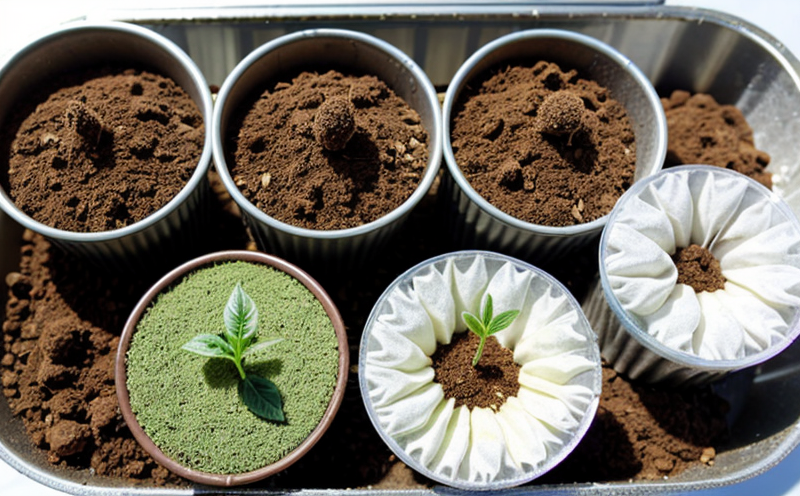Seed Viability Testing by TTC (Triphenyltetrazolium Chloride)
The Seed Viability Testing by TTC, or Triphenyltetrazolium Chloride method, is a critical process in agricultural and forestry testing. This procedure assesses the viability of seeds to ensure they are healthy and capable of germination, which is essential for successful crop production and plantation growth. By using this technique, laboratories can provide accurate data that supports decision-making processes in breeding programs, seed certification, and quality control.
The TTC method works by exploiting the ability of viable cells to reduce TTC into a red formazan dye. In its reduced state, the formazan is visible as a pink or red coloration within the seed tissue. This indicates that the cellular respiration process necessary for germination is present and functional.
For quality managers and R&D engineers in agriculture and forestry sectors, this testing method ensures that only healthy seeds are used in production cycles, thus minimizing waste and maximizing yield. Compliance officers can rely on it to meet regulatory standards related to seed quality assurance. The process involves meticulous specimen preparation, which includes soaking the seeds overnight before immersing them into a TTC solution for several hours.
The instrumentation typically required includes a microscope or an imaging system with high-resolution capabilities to observe the color changes within the tissue. Reporting of results should be done in accordance with international standards such as ISO 7542, which provides guidelines on seed viability testing using TTC.
| Industry Applications |
|---|
| Breeding Programs: Ensuring only viable seeds are used for breeding to enhance genetic diversity and resilience. |
| Seed Certification: Providing data necessary for certification processes, ensuring regulatory compliance. |
| Quality Control: Monitoring seed quality throughout the production cycle to ensure consistent performance. |
Why It Matters
Ensuring that seeds are viable before planting or sowing is crucial for agricultural and forestry sectors. Non-viable seeds can lead to a significant loss in crop yield, which has direct economic implications. For quality managers and R&D engineers, the ability to accurately predict seed viability using TTC testing contributes significantly to their efforts in optimizing production processes.
The process of TTC testing not only helps in identifying dead or dormant seeds but also provides insights into the overall health status of a batch of seeds. This information is invaluable for making informed decisions about which seeds should be used, thereby enhancing crop performance and sustainability.
- Reduces waste by ensuring that only viable seeds are planted.
- Promotes higher yields through optimized planting practices.
- Saves time and resources by eliminating the need to plant non-viable seeds.
The reliability of TTC testing in identifying truly viable seeds is paramount. It allows for better management of seed stocks, ensuring that only the healthiest seeds are used for propagation. This not only benefits individual farms but also contributes to broader agricultural and forestry goals like sustainability and resilience.
Industry Applications
- Breeding Programs: Ensuring only viable seeds are used for breeding to enhance genetic diversity and resilience.
- Seed Certification: Providing data necessary for certification processes, ensuring regulatory compliance.
- Quality Control: Monitoring seed quality throughout the production cycle to ensure consistent performance.
The TTC method finds extensive use in various sectors within agriculture and forestry. It is particularly important during breeding programs where genetic diversity plays a crucial role. Seed certification also benefits greatly from this testing, as it ensures that seeds meet regulatory standards. Quality control departments rely on TTC testing to maintain high standards of seed quality throughout the production process.
The method's application extends beyond these sectors to include research and development (R&D) in plant biology, where understanding seed viability is key to advancing knowledge about plant genetics and physiology. In forestry, it helps in ensuring that planted trees are robust enough to withstand environmental challenges, contributing to sustainable forest management practices.
Customer Impact and Satisfaction
The use of TTC testing by laboratories significantly impacts customer satisfaction in the agricultural and forestry sectors. By providing accurate data on seed viability, customers can make informed decisions about which seeds to plant or grow. This leads to higher crop yields and healthier plants, which directly benefits farmers and foresters alike.
- Enhanced Crop Yields: Customers benefit from increased productivity by using only viable seeds in their planting practices.
- Improved Plant Health: Healthy seeds ensure that the resulting plants are robust and capable of withstanding environmental stresses.
- Regulatory Compliance: Ensuring seeds meet regulatory standards is crucial for compliance officers, who can rely on TTC testing to provide necessary data.
Clients in agriculture and forestry sectors have reported higher levels of satisfaction with laboratories that offer TTC testing services. The reliability and accuracy of these tests contribute positively to customer relationships, fostering long-term partnerships based on trust and quality assurance.
Moreover, the transparent reporting of results according to international standards like ISO 7542 helps build confidence among clients regarding the integrity of the testing process. This transparency is crucial in maintaining high standards within the industry and ensuring that all parties involved are aligned with best practices.





